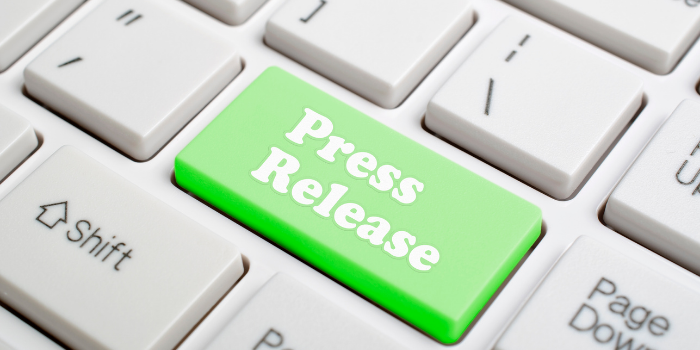It is the reporter’s job to look for newsworthy items. By providing a good press release, you are helping the press to do their job while making money for your own company. The media needs your press releases just as much as you need publicity.
Top Eleven Tips for a Successful Submission of a Press Release
- Keep the length a maximum of one page or 400 words.
- Always write your press release in the third person. Any first-person commentary, such as testimonials or product reviews, should only be in a quote with the source listed.
- Begin your press release with a short description of the news and then provide the details about the company that announced the news. Do not do this the other way around.
- Be careful to base your press release on facts. Report the facts about your product or service without fluff or hype. Let the reporter decide from the facts that your business is unique and newsworthy.
- Use timely and new information related to current events. Do not write about something old or well-known.
- When writing, remember who your audience is. Your audience is not your customers. Your audience is the journalists and editors.
- Make your release new, different, and engaging.
- Do not tell everything. Your purpose should be to provide enough information to generate interest and a follow-up from a reporter.
- Provide as much contact information as possible: contact name, address, phone, fax, email, website address, etc.
- Proofread your press release over and over. Do not trust your spell check software to do this for you. Have several individuals check your release before submitting it.
- You should have a link to your press releases on your website. Media may often come to your website and pick up an old story rather than the new story that drew them there in the first place. Also, the text helps with search engine placement because it provides good food for search engine spiders.

SAMPLE TEMPLATE
Below is an example of the basics of a press release.
FOR IMMEDIATE RELEASE:
Headline
City, State – Date – Summary of what the release is about, two to three lines long.
Photo Here (optional)
Lead paragraph – Answer who, what, where, when, how, and why
Text -The main body where your message should fully develop.
Corporate summary – Information about your organization, products, or services to help establish your expertise.
Contact:
Contact Person
Company Name
Telephone Number
Fax Number
Email Address
Web site address
POWERFUL WRITING

Be First
Get your story to the media before your competitors. Keep in mind when writing your release that it is always best to be first.
Be Unique
Your press release must be unique to stand out from hundreds of others. Always look for the unique aspects of your business and write about these first. Ask yourself, “What will catch the readers’ attention?”
Be Focused
To be successful, you must have a clear focus before you start writing. What is the news, and how can it benefit the reader and encourage them to take immediate action? The more focused and newsworthy releases are more likely to be published. A press release that contains a clear newsworthy focus or angle stands a much better chance of being read and picked up by the media.
Be Persistent
Sending just one press release is not likely to bring you a large amount of publicity. You must approach the press with the concept of providing a solution to readers’ problems. Let them know that you are the expert on this valuable information. Send that message repeatedly with different stories or news over time, and you will be successful.
Have a Strong Hook
The “hook” is the who, what, when, where, how, and why found in the first or opening paragraph. The hook must be a solid and concise summary of your release, and it is a critical element to your success. It would help if you let the editor or reporter know why your news is essential to their readers.
Have an Unforgettable Headline
Your headline must be attention-grabbing and unforgettable. The editor must know that what you have to say is essential to their readers by reading the headline. Start your search for a good headline by reading headlines of news similar to yours found in newspapers and magazines.
Powerful headlines have the following characteristics:
- They arouse curiosity.
- They pull you into the story.
- They create an emotional appeal.
- They make the reader stop what they’re doing to read more.
- They promise answers to a question or solutions to a problem.
- They promise to reveal a secret or hard-to-find information.
COMMON MISTAKES to Avoid when Writing a Press Release
The most common mistake is making your release sound like an ad and not news. We understand that your primary goal is to sell a product or service or bring attention to your organization. Still, you must provide news or valuable information, or the press will ignore your release. Top ten things to Avoid
- Avoid sending a release with no real news. News is what happens that is different, new, or unique. Otherwise, it is not news.
- Avoid using technical language that your audience will not understand. The layperson should easily understand your press release.
- Avoid fluff and words or phrases that make your press release sound like an advertisement or excessive self-promotion. Be careful not to mislead or overstate. Only use words like exciting or fantastic to describe things other than your product or business. Let journalists conclude that your product is impressive based on the facts you have presented.
- Avoid commenting on or providing news that is old and no longer news.
- Avoid writing more than one or a maximum of two pages.
- Avoid providing insufficient or wrong information. Your release must be complete, accurate, and specific. Suppose you are having an event, including all necessary dates. If it is an ongoing event, let people know.
- Avoid sending your release too late. You must send your release at least two weeks before an event for newspapers. Send releases at least four months in advance for major magazines.
- Avoid omitting a contact name, address, phone number, email address, and website URL. You must let editors know who to call if they have questions.
- Avoid subjects or headlines that are boring or confusing. Editors must be able to figure out from the headline why readers should care about what you have to say. Look at the headlines in magazines and newspapers to get ideas.
- Avoid press releases that are discriminatory or negative about another person or company. Even if you have all the facts and evidence to support your adverse claim against another, it is still a bad idea. This type of letter belongs in the editorial section of a newspaper and not in a press release.

